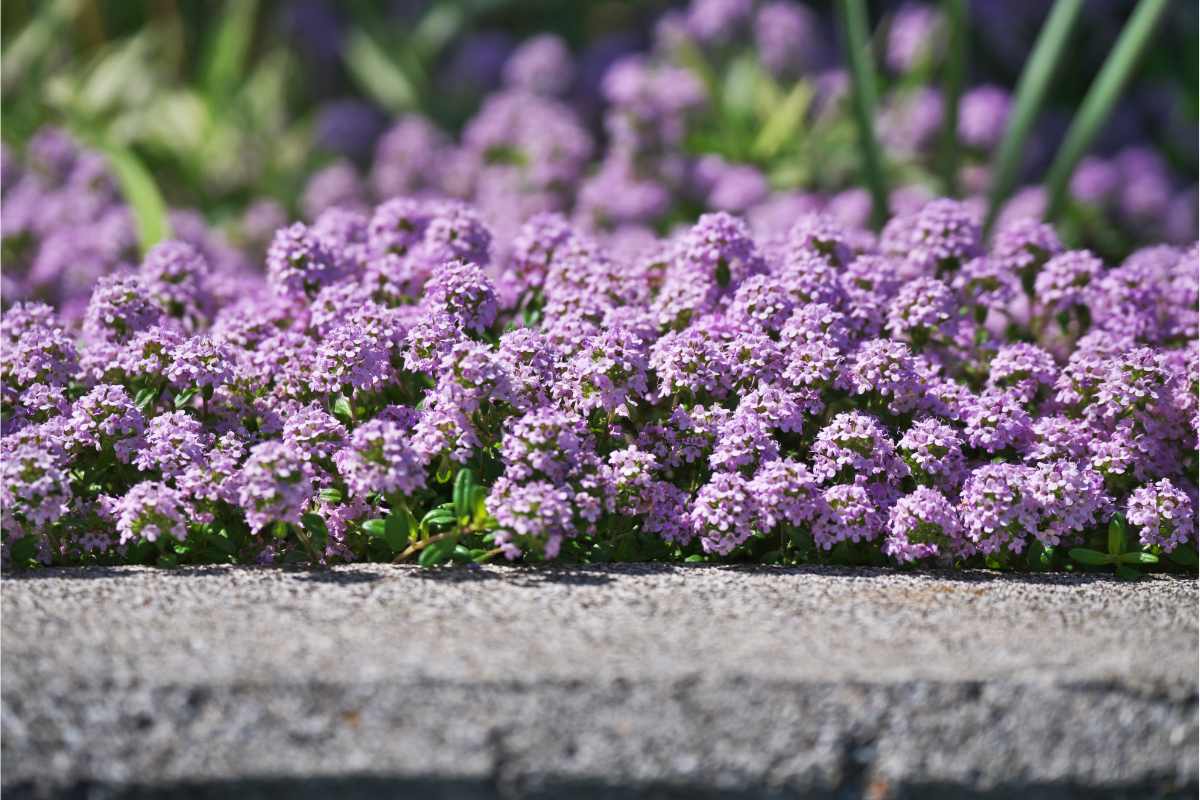
Due to the frequent droughts, choosing the best drought-tolerant plants for Texas, like blackfoot daisy and Texas mountain laurel, is essential. High temperatures and little rain in the summers turn the Lone Star State into a simmering skillet that’ll fry more delicate foliage. You have to be hardy to survive here.
In this article, we’ll present you with a list of trees, shrubs, ground covers, succulents, and perennials that can withstand these conditions and flourish in your Texas yard. From the resilient agave to the beautiful purple coneflower, we’ve got you covered.
Why Use Drought-Tolerant Plants?
Drought-tolerant plants require less water, fertilizer, and pesticides than other plants, making them ideal for low-maintenance landscapes. Additionally, they attract hummingbirds and helpful insects, like bees and butterflies. With so many possibilities, you can design a beautiful, long-lasting, drought-tolerant landscape that meets your needs.
Drought-Tolerant Trees for Texas
When choosing drought-tolerant trees for Texas, you have several options that can provide shade, beautiful flowers, or create a tropical feel for a backyard oasis. Selecting the right tree for your yard can help create a beautiful, low-maintenance landscape.
1. Cedar Elm (Ulmus crassifolia)
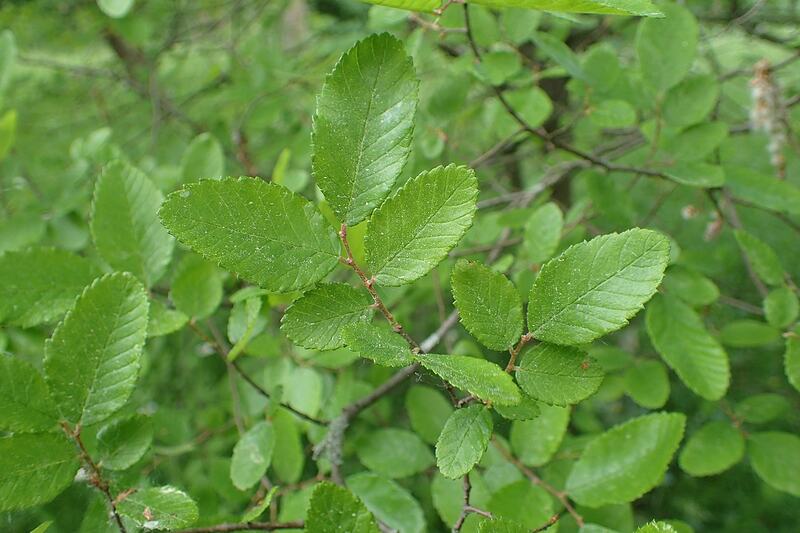
This deciduous tree, also known as the Texas elm, is a native plant. It is famous for its ability to withstand drought, making it a popular choice for homeowners and landscapers. It is adaptable to various soil types and light conditions and provides ample shade to help keep homes cool during hot Texas summers.
- Plant type: Tree
- USDA Hardiness Zone: 6 to 9
- Sun: Partial shade
- Soil: Adapted to most soil types, from moist to dry, and prefers alkaline soils
- Foliage: Deciduous
- Season of Interest: Summer and fall — Fine-textured green leaves turn yellow in the fall.
- Water needs: Moderate
- Mature size: Trunk has a diameter of 2 to 3 feet, and the tree can grow up to 75 feet tall. Its stiff branches form a narrow, oblong crown.
- Potential Problems: Common pests include aphids, powdery mildew, and mistletoe (can be a parasitic “pest” on woody trees). Prune low-hanging branches to avoid accidents.
- Note: This native elm tree is commonly found in East Texas and gets its name from its rough, cedar scale-like leaves.
2. Bald Cypress (Taxodium distichum)
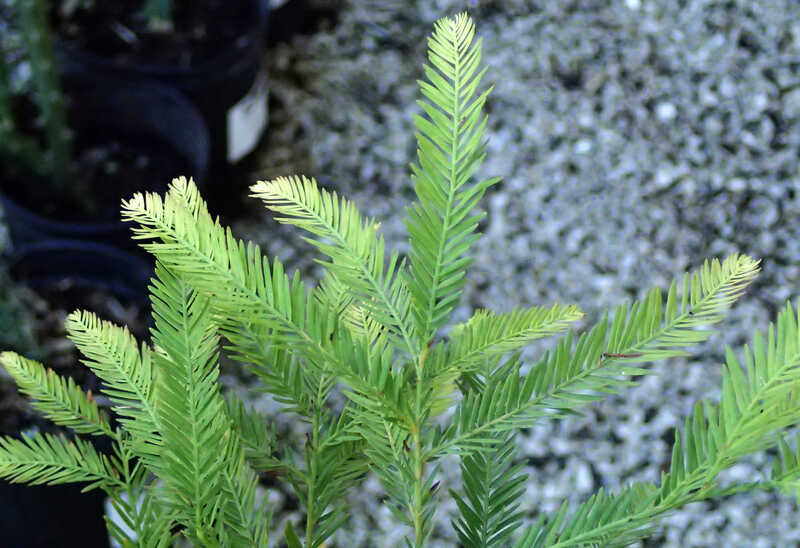
The bald cypress is a beautiful deciduous tree that enhances any landscape. Its bright green leaves turn rust-colored in the fall, and it can grow up to 50 to 70 feet tall. The foliage is also feathery and delicate, which adds a touch of sophistication. Moreover, its distinct shape and form create an intriguing silhouette in the winter.
- Plant Type: Tree
- USDA Hardiness Zone: 4 to 10
- Sun: Full sun to part shade
- Soil: Prefers moist, slightly acidic to neutral soil, and can handle some flooding.
- Foliage: Deciduous
- Season of Interest: Needle-like leaves that are bright green during the growing season and turn orange or rusty brown in the fall.
- Water Needs: Moderate
- Mature Size: 50 to 70 feet tall and 20 to 30 feet wide
- Potential Problems: No major health issues. However, the tree may shed leaves and cones, which will require regular cleaning up.
- Note: When planted near water, it develops “knees” with woody projections emerging from the water.
3. Texas Ash (Fraxinus texensis)
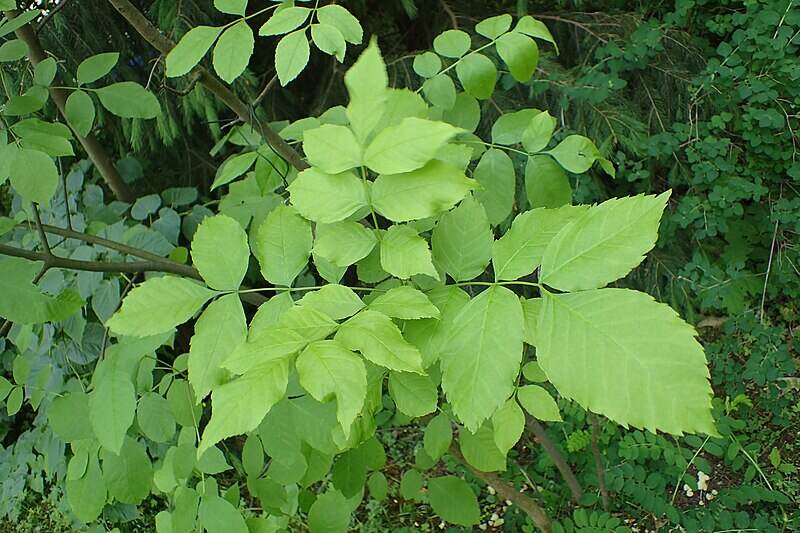
The Texas ash tree is a common sight throughout south and central Texas. It is known for its shade and rounded crown. Once established, it is easy to maintain because it can withstand drought and doesn’t need much fertilizer. During the fall season, the tree puts on a stunning display of colors, ranging from yellow, orange, and red to purple and maroon.
- Plant Type: Tree
- USDA Hardiness Zone: 5 to 9
- Sun: Full sun
- Soil: This plant prefers well-draining, loamy soil but can also grow in sand or clay. It can tolerate acidic, neutral, or alkaline soil.
- Foliage: Deciduous
- Season of Interest: Spring, summer, and fall — yellow, orange, and purple leaves.
- Water Needs: Moderate
- Mature Size: 30 to 40 feet tall
- Potential Problems: Emerald ash borers can affect younger trees, and ash tree diseases are a common risk.
- Note: Texas ash is one of the few ash trees that will grow here.
4. Texas Redbud (Cercis canadensis L. var. texensis)
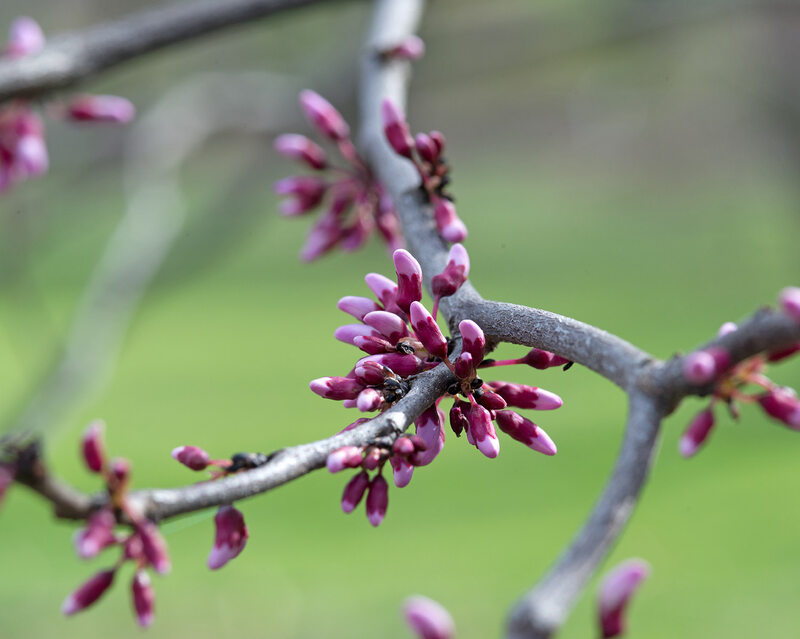
This small to medium-sized native tree blooms with stunning pink and purple flowers in early spring. Known for its heart-shaped leaves, the Texas redbud can be found all over Texas. The tree is not only beautiful and useful for ornamental purposes and light shade, but it is a great option if you’re interested in building a pollinator garden.
- Plant Type: Tree
- USDA Hardiness Zone: 6 to 9
- Sun: Full sun to partial shade
- Soil: Alkaline and well-draining soil, but can tolerate a range of soil types
- Foliage: Deciduous
- Bloom time: Early spring
- Water needs: Moderate
- Mature Size: 20 to 30 feet tall and wide
- Potential Problems: Stem cankers are a common problem.
- Note: The nectar of this plant attracts butterflies, bees, and other pollinators. Birds eat the seeds.
5. Texas Mountain Laurel (Dermatophyllum secundiflorum)

The Texas mountain laurel is a slow-growing evergreen tree that produces purple-blue flowers in late winter and early spring. It attracts pollinators, requires little maintenance, and is drought tolerant, making it a great option for busy homeowners who want a beautiful, low-maintenance tree.
- Plant Type: Tree
- USDA Hardiness Zone: 7-9
- Sun: Full sun to partial shade
- Soil: Well-drained soil
- Foliage: Evergreen
- Bloom time: Late winter and early spring
- Water needs: Low
- Mature Size: 10-20 feet tall on average but can reach 30 feet tall and wide
- Potential Problems: All parts of the Texas mountain laurel are toxic if ingested, so use cautiously around small children and pets.
- Note: Plant a few together for a privacy screen, or use one as a focal point in your front yard landscaping.
6. Eve’s Necklace (Sophora affinis)
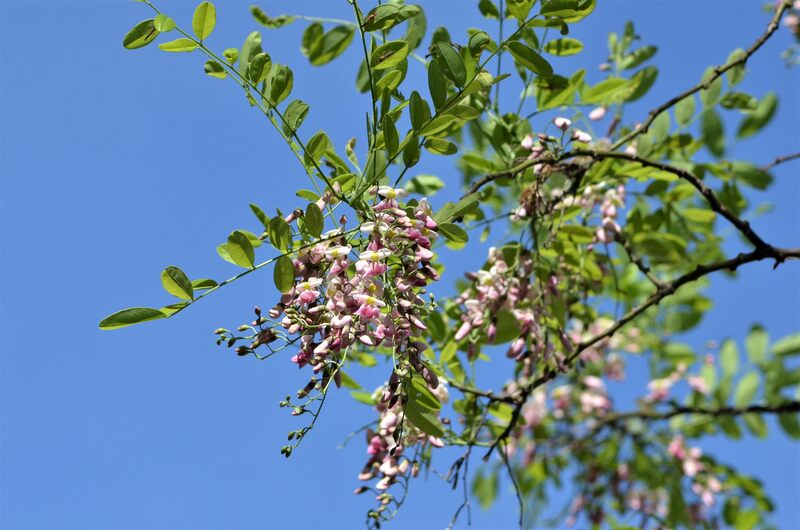
This small to medium-sized tree is a Texas native plant. In the spring, Eve’s necklace produces fragrant white flowers, followed by seed pods that resemble long bead necklaces. Children often use these seed pods for crafts. In addition to being a beautiful ornamental tree, Eve’s necklace is also a valuable food source for local wildlife.
- Plant Type: Tree
- USDA Hardiness Zone: 6-9
- Sun: Full sun to partial shade
- Soil: Well-drained, rocky, or sandy soils
- Foliage: Green, pinnate leaves
- Bloom time: Spring
- Water needs: Low
- Mature Size: Up to 30 feet tall and 20 feet wide
- Potential Problems: None known
- Note: The seed pods of Eve’s necklace are edible and were used by Native Americans for food and medicine.
7. Mexican Palmetto (Sabal mexicana)
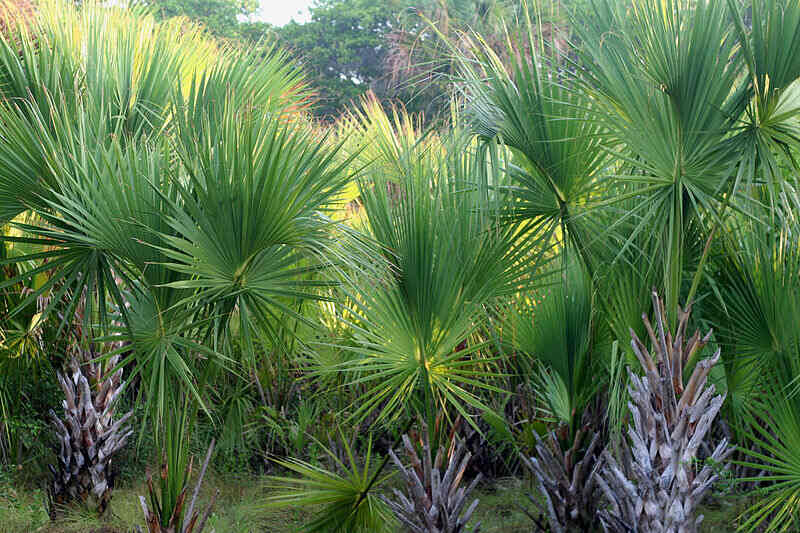
This palm is an excellent choice for those who want to plant a palm tree that can survive in drought conditions and thrive in Texas. Originating from the Texas Rio Grande Valley, the Mexican palmetto has a tropical appearance and tolerates both drought and cold, withstanding temperatures as low as 15 degrees Fahrenheit.
- Plant Type: Palm tree
- USDA Hardiness Zone: 8 to 11
- Sun: Full sun to partial shade
- Soil: Can tolerate different types of soils, including salty and poorly drained soils
- Foliage: Evergreen
- Bloom Time: Spring
- Water Needs: Low to moderate
- Mature Size: Up to 50 feet tall
- Potential Problems: Extreme cold and lethal yellowing disease are its biggest threats.
- Note: It can be planted in groups or as an accent tree.
8. Dwarf Palmetto (Sabal minor)

The dwarf palmetto is a beautiful, low-maintenance palm tree that can add a touch of elegance to your garden or landscape. Its glossy green leaves, small white flowers, and black berries make it an attractive option for those looking for a unique plant that can thrive in Texas’ climate.
- Plant Type: Palm
- USDA Hardiness Zone: 7-10
- Sun: Full sun to partial shade
- Soil: Well-drained soil; tolerates sand, loam, and clay
- Foliage: Evergreen, dark green, fan-shaped leaves up to 3 feet long
- Bloom Time: Spring
- Water Needs: Low
- Mature Size: 3 to 4 feet tall, 4 to 6 feet wide
- Potential Problems: Leaf scorch, blight, and brown spot are things to watch for.
- Note: Dwarf palmetto is an excellent plant for erosion control in your yard and as a focal point.
9. Mediterranean Fan Palm (Chamaerops humilis)
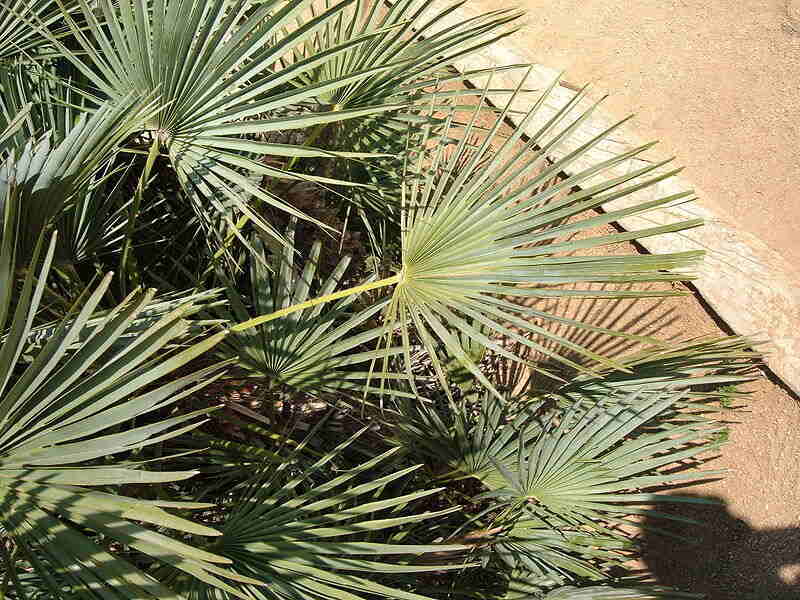
This palm grows slowly and is found natively in the Mediterranean region. It can tolerate various soil types and growing conditions, including drought. The Mediterranean fan palm is also cold-hardy, surviving temperatures as low as 10 degrees Fahrenheit. Its compact form makes it ideal for landscaping in a small backyard or as an accent plant.
- Plant Type: Palm tree
- USDA Hardiness Zone: 8 to 11
- Sun: Full sun to partial shade
- Soil: Well-draining soil, but can tolerate a range of soil types
- Foliage: Evergreen
- Water Needs: Low to moderate
- Mature Size: 6 to 12 feet tall and 6 to 10 feet wide
- Potential Problems: Fusarium wilt, a terminal fungal disease, is possible.
- Note: Mediterranean fan palms are slow-growing and can take several years to reach their mature size.
Drought-Tolerant Privacy Hedges and Shrubs for Texas
If you would like to increase privacy in your Texas yard, several drought-resistant hedges can do the job. Privacy hedges and shrubs are eco-friendly and can create a beautiful landscape that thrives in even the most challenging conditions. They offer protection from the weather and prying eyes of neighbors.
10. Texas Sage (Leucophyllum frutescens)
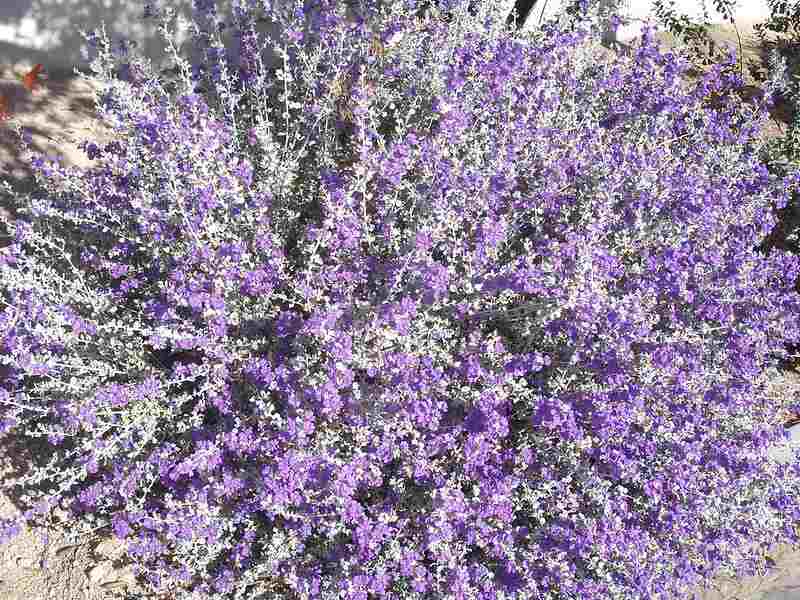
This shrub is low-maintenance and produces beautiful purple, pink, or white flowers, depending on the variety, that give off a scent similar to sage. Plus, its flexible nature allows it to be easily shaped with hedge trimmers, making it a popular choice for water-efficient landscaping in Texas.
- Plant Type: Shrub
- USDA Hardiness Zone: 7 to 11
- Sun: Full sun
- Soil: Well-draining soil
- Foliage: Evergreen
- Bloom Time: Summer
- Water Needs: Low
- Mature Size: 3 to 8 feet tall and wide, depending on the variety
- Potential Problems: It may suffer from cotton root rot if overwatered.
- Note: Texas sage is drought tolerant and can survive on rainfall alone. It is also deer resistant.
11. Texas Ebony (Ebenopsis ebano)
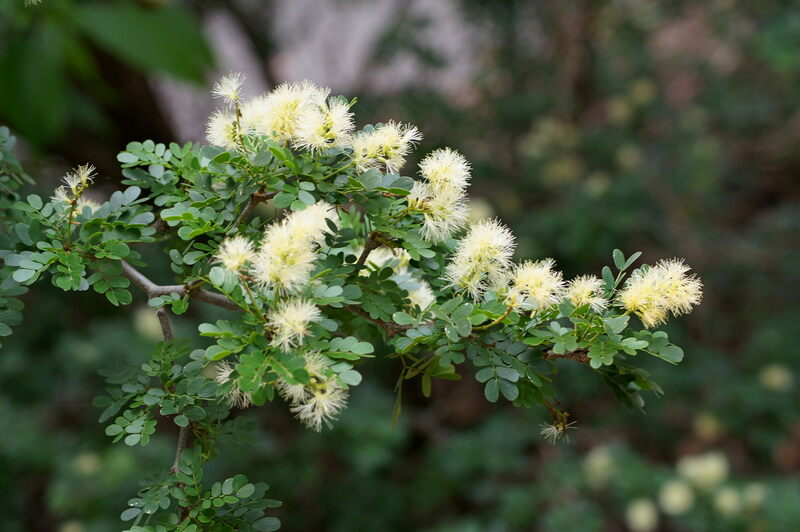
The Texas ebony is a slow-growing evergreen shrub that can reach up to 30 feet tall and 20 feet wide. Its glossy dark green foliage produces small white flowers and black seed pods. This plant is drought tolerant and can grow in various soil types. Additionally, it is resistant to most pests and diseases.
- Plant Type: Large shrub or tree
- USDA Hardiness Zone: 9 to 11
- Sun: Full sun to partial shade
- Soil: Well-draining soil, but can tolerate a range of soil types
- Foliage: Evergreen
- Bloom Time: Spring
- Water Needs: Low to moderate
- Mature Size: Up to 30 feet tall and 20 feet wide
- Potential Problems: No serious pests or diseases
- Note: The Texas ebony is slow-growing and requires minimal care.
12. Hopbush (Dodonaea viscosa)
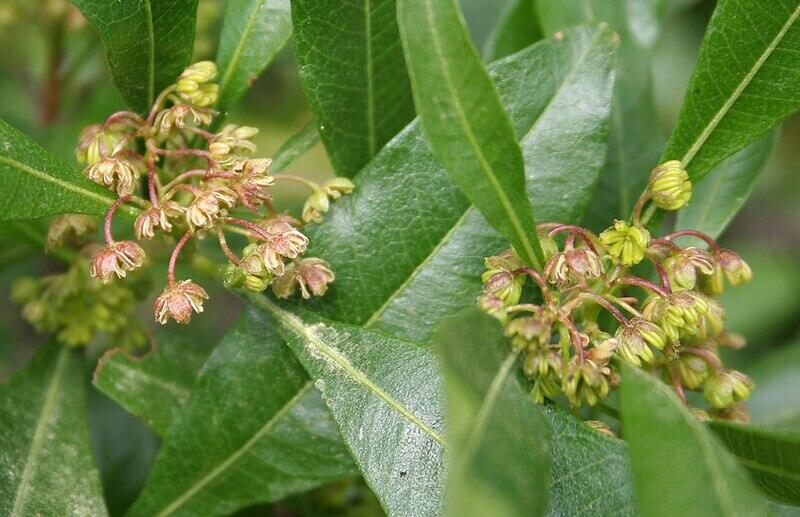
Hopbush is a great option for a water-conserving hedge. It has lush, evergreen foliage that thrives in full sun and grows quickly, making it perfect for a private landscape. In the spring, small green and yellow flowers bloom, followed by light brown, papery seed pods.
- Plant Type: Shrub
- USDA Hardiness Zone: 7 to 11
- Sun: Full sun to partial shade
- Soil: Well-draining sandy, clay, rock, or loam soils
- Foliage: Evergreen
- Bloom Time: Spring
- Water Needs: Low
- Mature Size: 8 to 12 feet tall and wide
- Potential Problems: No serious pests or diseases
- Note: Hopbush leaves come in two colors — green and purple-tinted
Drought-Tolerant Ground Covers for Texas
Flowering ground covers are a great option as they require minimal upkeep and enhance curb appeal. Texas offers numerous drought-resistant ground covers to choose from. Select native Texas plants with complementary colors, textures, sizes, shapes, and pest/disease resistance to create a beautiful, low-maintenance landscape.
13. Purple Heart (Setcreasea pallida)
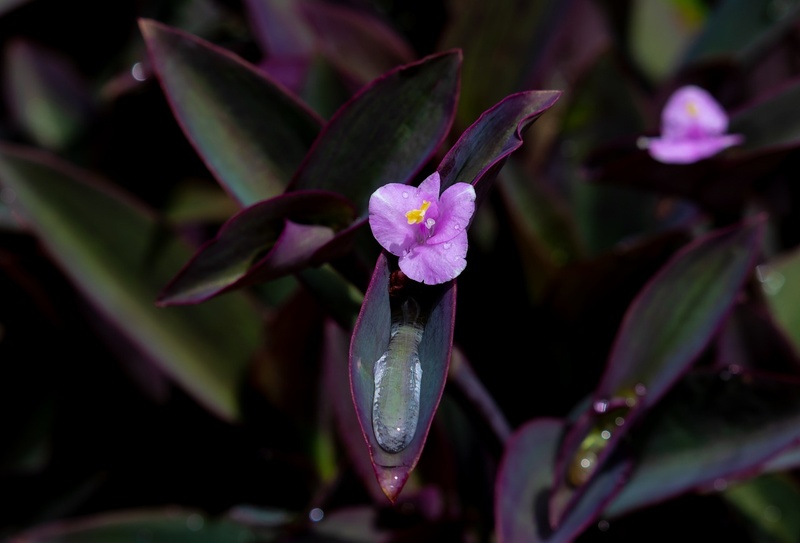
The purple heart is a low-growing perennial that produces small purple flowers in the summer. It is drought-tolerant and can grow in a variety of soil types. This plant is also low-maintenance and is a good ground cover to incorporate into your rock garden design.
- Plant Type: Perennial ground cover
- USDA Hardiness Zone: 8 to 11
- Sun: Prefers partial shade
- Soil: Well-draining soil, but can grow in a range of soil types
- Foliage: Evergreen
- Bloom Time: Summer
- Water Needs: Low
- Mature Size: 1 foot tall and 1 to 2 feet wide
- Potential Problems: Scales and mealybugs can cause issues.
- Note: The sap from this plant can irritate sensitive skin.
14. Creeping Thyme (Thymus serpyllum)
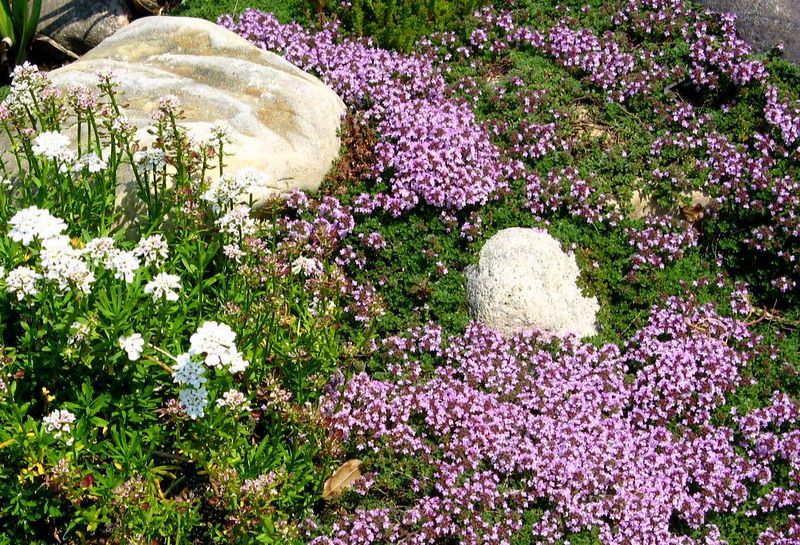
Photo credit: Andrea_44 / Flickr / CC BY 2.0
Creeping thyme is a tough, low-growing ground cover that blooms in summer with fragrant pink, lavender, or white flowers. It can tolerate drought and grows in sandy or rocky soils. If you want a grass alternative or are creating a living patio in your Texas yard, this plant is a great choice.
- Plant Type: Perennial ground cover
- USDA Hardiness Zone: 4 to 9
- Sun: Full sun
- Soil: Sandy or rocky soil
- Foliage: Evergreen
- Bloom Time: Summer
- Water Needs: Low
- Mature Size: Up to 6 inches tall and 12 inches wide
- Potential Problems: Overwatering can cause root rot.
- Note: Creeping thyme is deer resistant and good for high-traffic areas.
15. Silver Ponyfoot (Dichondra argentea)
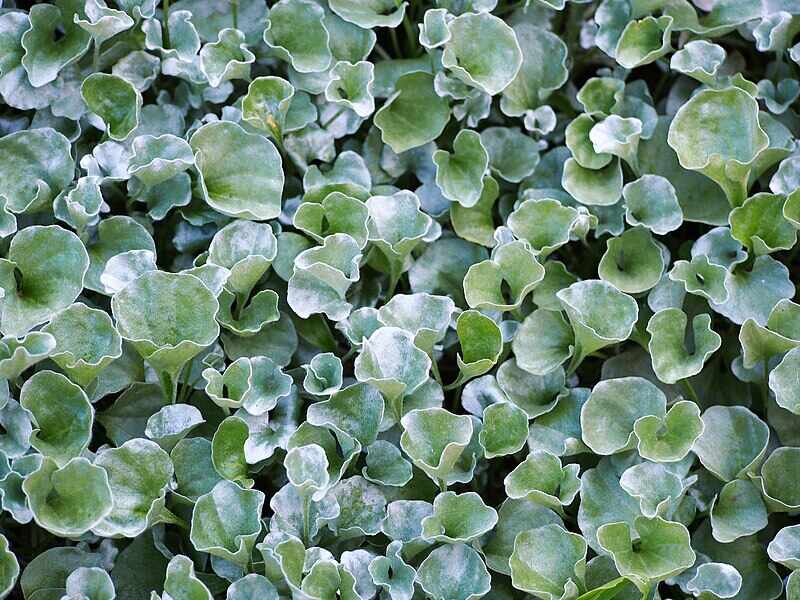
This West Texas native ground cover features small flowers and green, silvery foliage, making it an attractive option for homeowners who want a beautiful yard with low-maintenance plants. It can grow well in different types of soil, requires only minimal upkeep, and can tolerate drought.
- Plant Type: Perennial ground cover
- USDA Hardiness Zone: 8 to 11
- Sun: Full sun to partial shade
- Soil: Well-draining soil, but can grow in a range of soil types
- Foliage: Evergreen
- Bloom Time: Summer
- Water Needs: Low
- Mature Size: Up to 6 inches tall and 2 to 3 feet wide
- Potential Problems: Too much water causes root rot, but it’s relatively problem-free.
- Note: This plant grows quickly and can be used to prevent erosion.
Drought-Tolerant Cacti and Succulents for Texas
By using drought-tolerant succulents, your landscape design can save water and reduce upkeep. These Texas-friendly plants are ideal for homeowners looking for a low-maintenance yard, rock garden, or xeriscaping. They require minimal maintenance and add visual interest to any landscape.
16. Golden Barrels (Echinocactus grusonii)
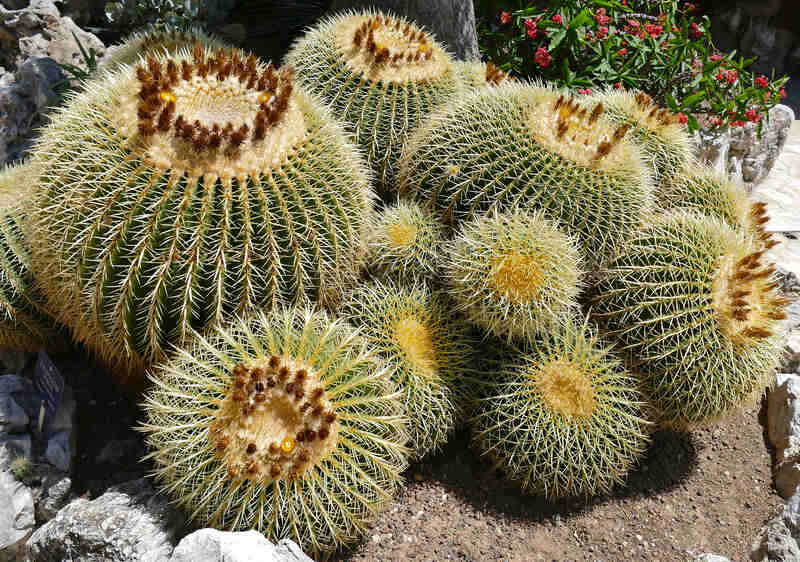
The golden barrel is a small colorful cactus that comes in various sizes. These cacti have a distinctive, round shape and are pale green with gold accents. They can create focal points, add texture, and provide dimension to any Texas landscape with minimal maintenance required.
- Plant Type: Cactus
- USDA Hardiness Zone: 9 to 12
- Sun: Full sun, partial sun
- Soil: Well-draining loam or sandy soil
- Foliage: Evergreen
- Bloom time: Spring
- Water needs: Low
- Mature Size: 3 to 4 feet tall and wide
- Potential Problems: Sharp spines. Pests like spider mites, mealybugs, and scale insects are something to watch for.
- Note: No problems with disease, and it’s deer resistant.
17. Agave (Agave spp.)
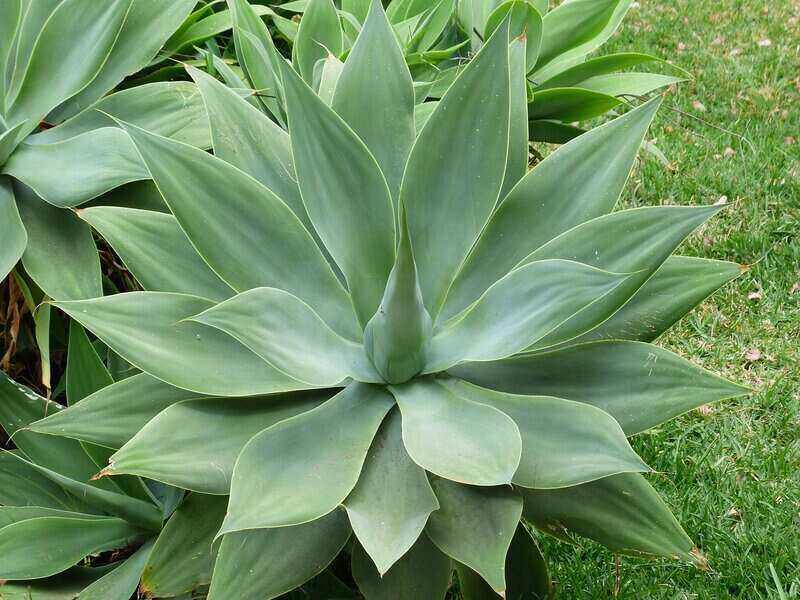
Agave is a popular succulent that thrives in Texas’ dry climate. It is hardy, low-maintenance, and comes in various shapes and sizes, making it a versatile option for a cactus landscaping design. Once established, agave requires little water or fertilizer.
- Plant Type: Succulent
- USDA Hardiness Zone: 8 to 11
- Sun: Full sun to partial shade, depending on the variety
- Soil: Well-draining
- Foliage: Evergreen
- Bloom Time: Depends on the variety
- Water Needs: Low
- Mature Size: Depends on the variety
- Potential Problems: Some varieties have sharp spines or thorns.
- Note: Agaves come in various sizes and shapes, from small rosettes to large architectural forms.
18. Yucca (Yucca spp.)
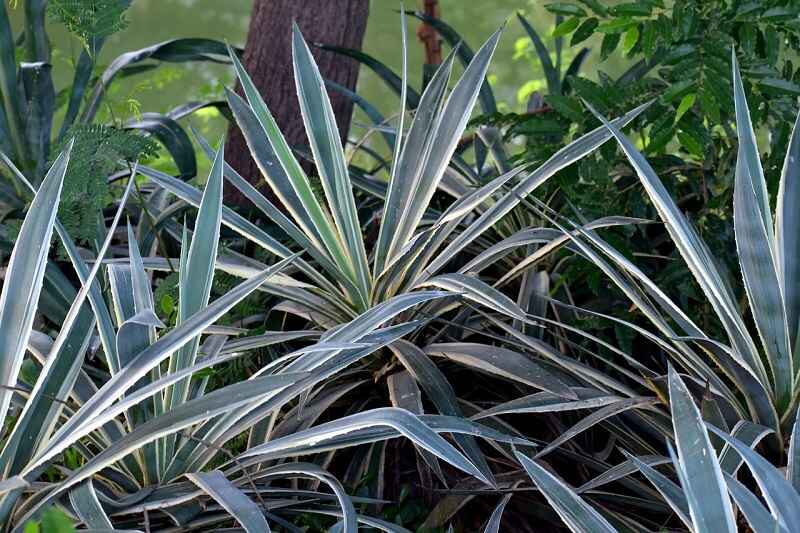
Yuccas are drought-tolerant succulents that thrive in Texas’ hot and dry climate. There are over 30 species of yucca, and this versatile plant comes in different shapes and sizes. Spanish dagger (Yucca gloriosa) grows multiple branches with lime-green leaves, while the red yucca (Hesperaloe parviflora) produces pink flowers all year.
- Plant Type: Succulent
- USDA Hardiness Zone: 5 to 10, depending on the cultivar
- Sun: Full sun
- Soil: Prefers sandy, well-drained soil
- Foliage: Evergreen
- Bloom time: Spring and summer
- Water needs: Low
- Mature Size: Large yuccas can reach 30 feet and spread to 25 feet wide. Smaller varieties grow to be only 2 to 4 feet tall and wide.
- Potential Problems: Too much water can cause fungal disease and blight.
- Note: Mildly toxic and one of the plants poisonous to dogs and cats.
Drought-Tolerant Perennials for Texas
Massive dust storms and tumbling tumbleweeds are staples of the hot, dry summer. Despite the inhospitable environment, many plants are well-suited for Texas’ sun and are heat tolerant. These plants can withstand heat and drought, and unlike annuals, perennial plants will come back every year.
19. Blackfoot Daisy (Melampodium leucanthum)
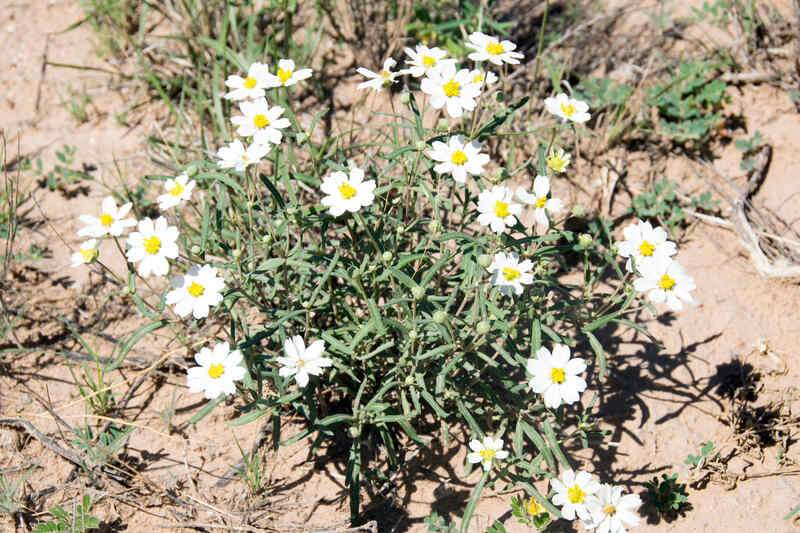
Blackfoot daisies are hardy perennials that produce bright white flowers with yellow centers and a honey scent. They are drought tolerant and can grow in various soil types, from sand to clay. This plant is also low-maintenance, requiring no fertilizer and very little water.
- Plant Type: Perennial
- USDA Hardiness Zone: 4 to 9
- Sun: Full sun
- Soil: Well-draining soil, but can grow in a range of soil types
- Foliage: Evergreen
- Bloom Time: Spring to fall
- Water Needs: Low to moderate
- Mature Size: 6 to 12 inches tall and wide
- Potential Problems: No serious pests or diseases. Be careful not to overwater it.
- Note: The Blackfoot daisy is a great choice for rock gardens and xeriscapes. It looks great when planted next to verbena and penstemons.
20. Purple Coneflower (Echinacea purpurea)
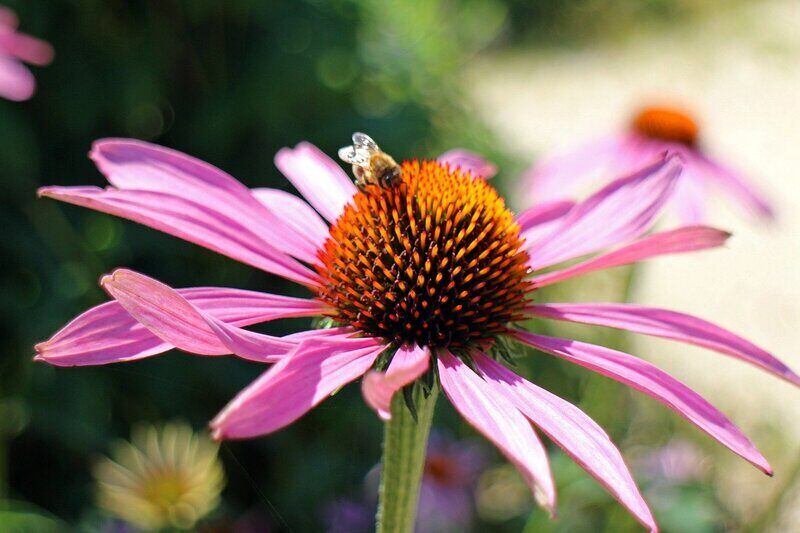
The purple coneflower is an attractive perennial that produces large, daisy-like flowers with purple petals and dark centers. It can withstand drought conditions and can grow in various soil types. This low-maintenance plant works well as a border plant or when landscaping a small front yard.
- Plant Type: Perennial
- USDA Hardiness Zone: 3 to 8
- Sun: Full sun to partial shade
- Soil: Well-draining soil, but can grow in a range of soil types
- Foliage: Deciduous
- Bloom Time: Summer
- Water Needs: Low to moderate
- Mature Size: 3 to 4 feet tall and 1 to 2 feet wide
- Potential Hazards: No serious pests or diseases
- Note: Several new hybrid varieties are available in various heights and colors, including green, orange, and pale pink.
FAQ: Drought-Tolerant Plants for Texas
1. How Do I Choose the Right Drought-Tolerant Plants in Texas?
To select drought-resistant plants that will thrive in your area, choose plants with a proven history of doing well in your area, and take into account their visual characteristics, such as color, texture, and growth pattern. When choosing plants, also consider the following factors:
- Soil type
- Amount of sun exposure
- Water needs
2. If My Plants Are Drought Tolerant, How Often Should I Water Them?
Drought-tolerant plants require some water to survive, particularly in their first year. After that, they can survive with only rainfall, but they may still need occasional watering during periods of extreme drought or heat. To promote deep root growth and drought tolerance, water them deeply but infrequently.
3. What Grasses Can I Grow in Texas?
The best grasses for Texas will depend on your location. Buffalograss, Bermuda, and Zoysia can be grown statewide. Most of Texas can grow only warm-season grasses, except in North Texas, where cool-season grasses can also be cultivated.
To learn more about lawn care in Texas, check out these helpful articles:
When To Call a Professional
If you’re unsure about how to best care for your drought-tolerant plants, or if you need help designing a xeriscape or low-maintenance landscape, it may be time to call in a professional. A local lawn care pro can help you select the right plants for your needs and ensure that they are installed and maintained properly.
Main Image Credit: igaguri_1 / Canva Pro / License